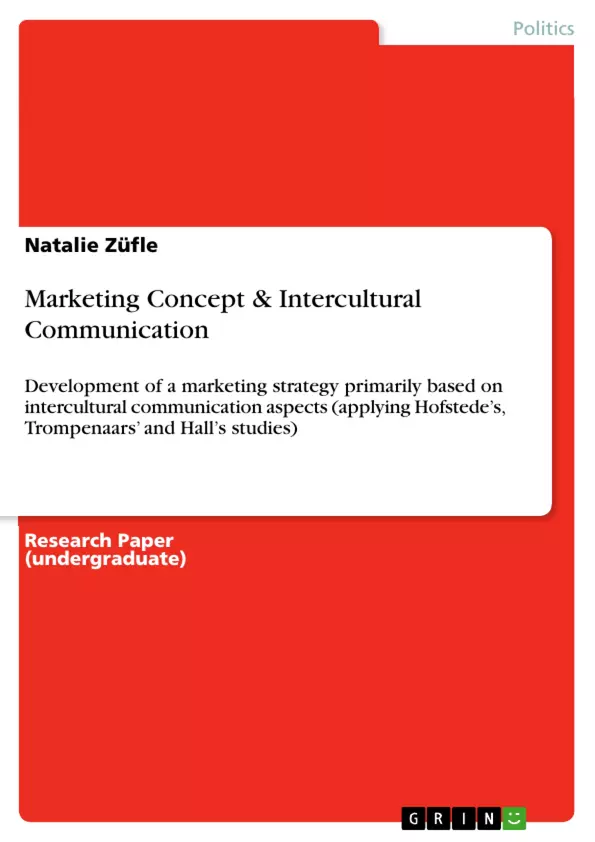A product which could be sold in my tandem-partner’s country Oman is air conditioning systems – due to the sheer heat and humidity, especially in summer time. Thereby, I assume that a certain demand in cooling systems is given. In the following, I will develop a marketing strategy for advertising air conditioning systems in Oman. The strategy will be based primarily on intercultural communication aspects.
Inhaltsverzeichnis (Table of Contents)
- ANALYSIS
- Cultural Type of the country
- Cultural Characteristics
- The 5D Model of professor Geert Hofstede
- Advertising Medium
- Advertisement Design
- Opportunities
- Potential Problems
Zielsetzung und Themenschwerpunkte (Objectives and Key Themes)
The main objective of this document is to develop a marketing strategy for advertising air conditioning systems in Oman, focusing on intercultural communication aspects. The strategy is based on an analysis of Oman's cultural characteristics using various frameworks including Hofstede's 5D Model, Trompenaars' cultural dimensions, and Hall's high-context/low-context communication theory.
- Intercultural communication in advertising
- Cultural characteristics of Oman
- Application of cultural frameworks to marketing strategy
- Development of an advertising campaign tailored to Omani cultural values
- Opportunities and challenges of cross-cultural marketing
Zusammenfassung der Kapitel (Chapter Summaries)
The text begins by identifying air conditioning systems as a potentially successful product in Oman due to the country's hot climate and growing middle class. It then analyzes Oman as a high-context culture, emphasizing the importance of indirect communication, non-verbal cues, and the need to avoid overly formal or technical language in advertising.
The author then examines Oman's cultural characteristics through Hofstede's 5D Model, highlighting the country's high Power Distance, low Individualism, and moderate Masculinity scores. These factors suggest a strong emphasis on family and tradition, with a preference for harmonious relationships and clear hierarchical structures. The text concludes by highlighting the importance of adapting advertising to local values, considering the use of English for cost-effectiveness, and avoiding potential cultural misunderstandings.
Schlüsselwörter (Keywords)
This text focuses on intercultural communication, marketing strategy, high-context culture, Hofstede's 5D Model, Trompenaars' cultural dimensions, Oman, air conditioning systems, advertising campaign, cultural adaptation, and cross-cultural marketing.
- Quote paper
- Natalie Züfle (Author), 2009, Marketing Concept & Intercultural Communication, Munich, GRIN Verlag, https://www.grin.com/document/180072



